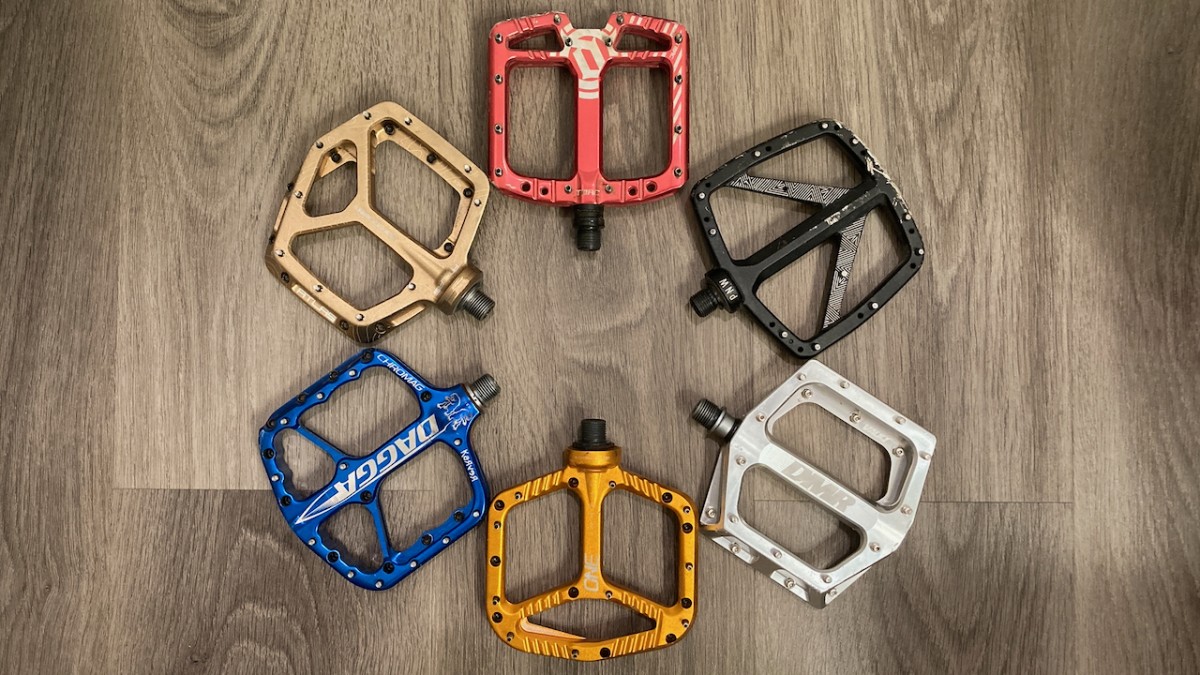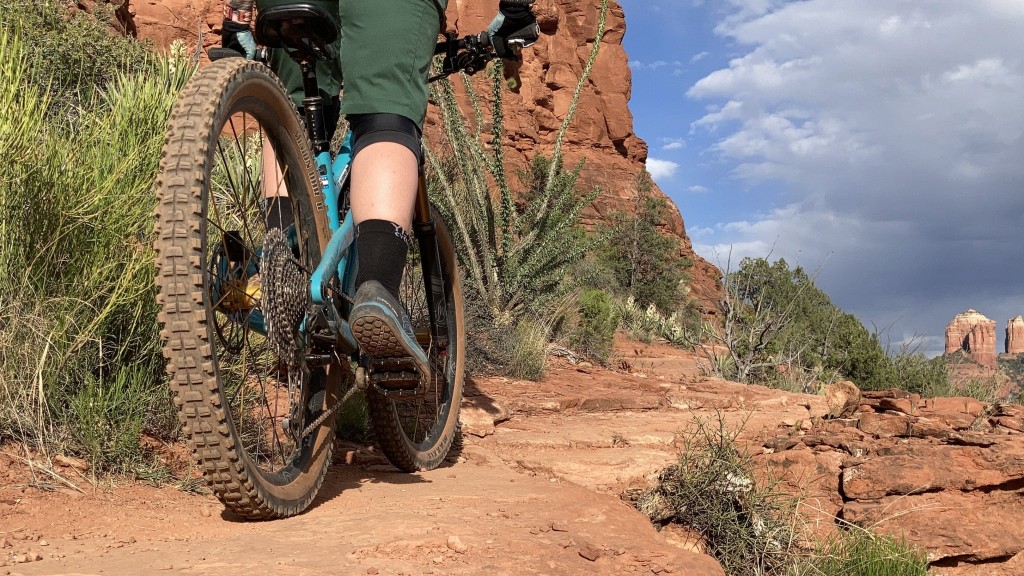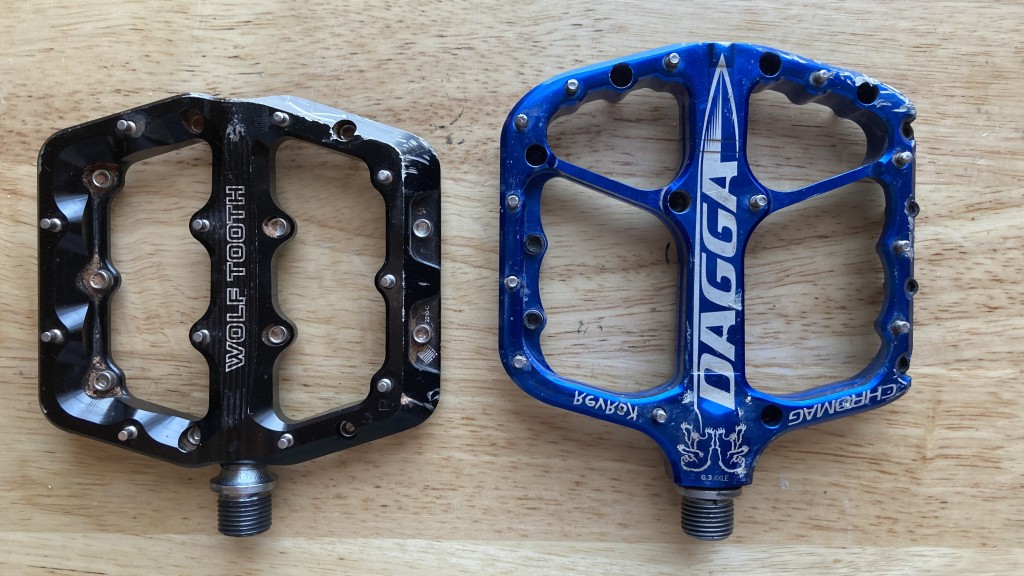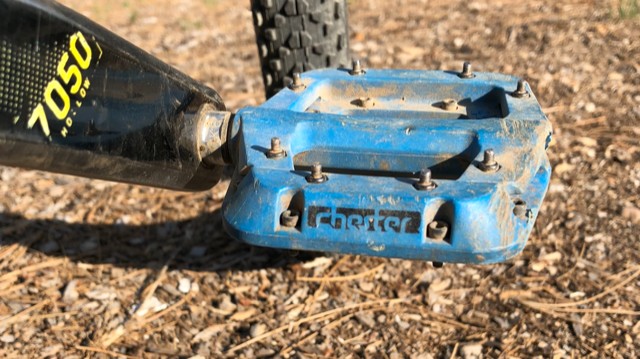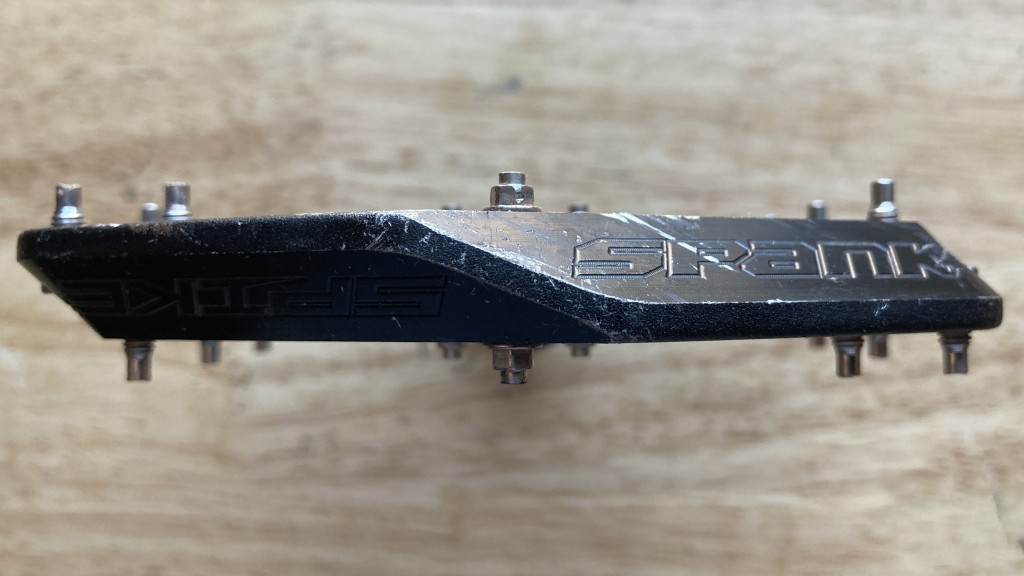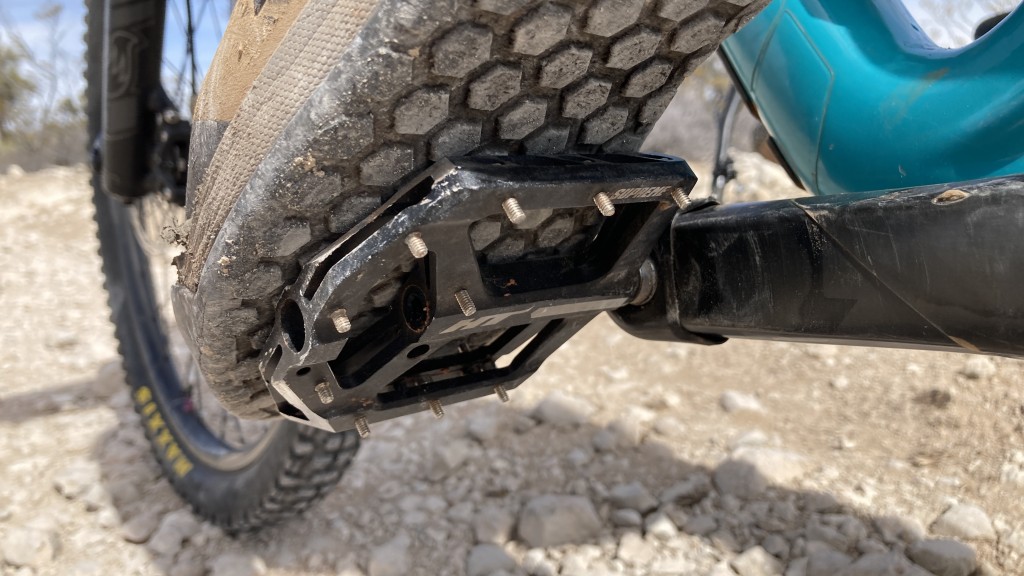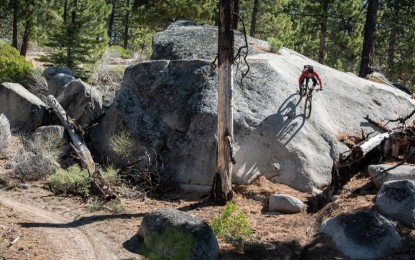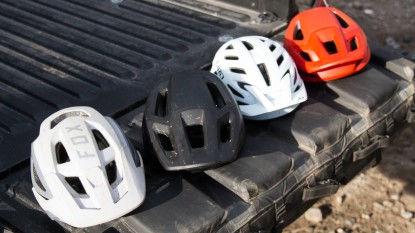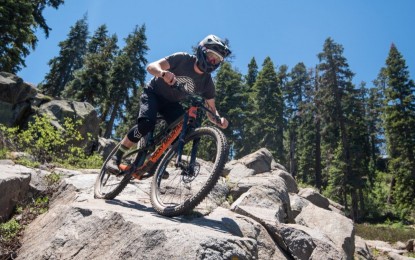A mountain bike needs pedals to ride, but determining what type of pedal to purchase can seem daunting with many options. For example, do you go with flat or clipless pedals? An aluminum body or nylon? Our review focuses on flat pedals, which can be used across riding disciplines and by beginners and experienced riders alike. Many who choose flat pedals prefer the ease of getting a foot down and the confidence associated with not being clipped in. Our goal is to help you find the right type of pedal for your mountain bike riding style, terrain, and budget. At a minimum, your pedals should help you feel confident and in control of your bike.
Why Flat Pedals?
The biggest advantage of flat pedals compared to clipless pedals is that you can more easily put a foot down. Clipless pedals have a cleat mounted to the shoe's outsole that locks into the pedal and requires foot twisting to release. While clipless pedals can offer an additional advantage while climbing and eliminate the foot bouncing on them, they can be more intimidating because your foot is locked into the pedal. With flat pedals, your foot sits on the pedal and is held in place by the bond created between the pedal's pins and the outsole of your shoe. This allows you to lift your foot off the pedal to place it on the ground. This flexibility can be especially useful when learning new skills or trying maneuvers with a higher risk level. Some riders prefer a flat pedal in high-risk terrain, knowing that they will not potentially be attached to their bike in the event of a crash. Flat pedals can also be used more easily for everyday bike riding and commuting and can be used with pretty much any shoe. Our roundup of the top bike pedals is focused on all the different styles of bike pedals.
Here we break down the pros and cons of each. Understanding the parts of a flat pedal and how they work in unison can help you determine what type of flat mountain bike pedal best suits your riding style and budget.
Pedal Body Material
The pedal body of a mountain bike flat pedal is generally made of nylon or aluminum. Aluminum pedals usually have a thinner profile than their nylon cousins. This is important because a thinner pedal profile, or the thickness of a pedal, makes it less likely to hit the ground or a rock. However, the differences between aluminum and nylon pedals can sometimes be a fraction of a millimeter, depending on the design and construction of the pedal.
The advantages of an aluminum pedal are its strength and durability. Aluminum pedals can withstand rock strikes more than nylon pedals, whose pedal body can more easily crack or chip during impact. Aluminum can flex more under the impact, adding to its long-term durability.
A downside to an aluminum pedal is its cost, which generally is substantially more than a nylon pedal. When considering what type of pedal to purchase, consider how much riding you do and your local terrain. For some riders, a high-quality nylon pedal more than fulfills their needs. The needs of newer riders or someone who rides occasionally may not warrant the increased cost of an aluminum pedal. Alternatively, someone who frequently rides in rocky terrain may be harder on their pedals and prefer an aluminum pedal's strength and long-term durability.
Platform Size
Flat pedals come in all different shapes and sizes; some companies even make different-sized pedals for different-sized feet. When purchasing flat pedals, take into consideration your shoe size. The perimeter of the pedal platform should support your foot, both front to back and side to side, without extending too much past the width of your shoe's outsole. Ideally, the pedal body will sit under your shoe's outsole and not extend past it. If a pedal is substantially wider than your shoe's outsole, you may be prone to hitting your pedals on things on the side of the trail.
To get an idea of what size pedal will work best for your shoe size, measure your shoe's outsole at its widest part in millimeters. Then, compare this measurement to the pedals you are considering. Look for a pedal with the same or similar width as your shoe's outsole to optimize the connection between your shoe and the pedal's platform.
Pedal Thickness
Companies have been trying to create thinner and stronger pedals because a thinner pedal allows for increased ground clearance (also known as fewer pedal strikes), a lower center of gravity, and less weight. However, this requires stronger materials and more machining, which can lead to higher prices.
A thinner pedal body is less likely to come in contact with rocks and other trail debris while pedaling because of better clearance. If you've ever tagged a rock with your pedal and suddenly been thrust forward, you can understand the merits of a slimmer pedal profile. Reducing pedal strikes helps prevent the pedal pins from becoming bent or dented and helps to maintain their grip and functionality. If your riding is in an area with a lot of rocks and roots, a thinner pedal can help to reduce pedal strikes.
Pins
The pins of a flat pedal are designed to dig into the outsole of your shoe, creating a bond so that your foot does not slide around. Pins generally are top-loading or bottom loading. This refers to how the pin screws into the pedal body. Pedal pins use either a small box, hex, or Torx wrench. Pins that insert from the top can become damaged, and the Allen or Torx head can become deformed from ground strikes. A bent bottom-loading pin is generally easier to replace than a bent top-loading pin.
Concavity
The difference in height between the highest pin and the center of the pedal body is called concavity. The idea is that the more concave or "cupped" a pedal is, the more you grip the pedal. The pedal body itself can be concave, convex, or flat. Some companies mix two types of pins to create a concave or convex platform for the foot to rest on.
Some allow the rider to adjust the height of the pins with washers to dial in desired grip and performance. By changing pin height, a rider can tune in the concavity of their pedals, tailoring their pedals to their needs. Our team of testers prefers a concave platform and feels it provides a better connection between our foot and the pedal. It's important to note that there is a significant difference in the feel of pedals that range from flat to concave or even convex. Not all riders prefer high concave pedals, some prefer a flatter feel, and some may experience foot pain with a too-concave or convex pedal. Regarding concavity, there is no one size fits all; we encourage you to test both platforms to determine which works best for you.
Conculsion
Choosing the correct pedals for your needs is important for mountain biking. When purchasing new flat pedals, consider how much grip you want and what terrain you will be riding. If you value a locked-in feel, look for pedals with more pins per side. Think about your foot size in relation to the size of the pedal platform. If you have a larger foot, you will want a wider profile pedal that fully supports your foot. If you have a smaller foot, look for a pedal that does not extend much beyond the side of your foot. Lastly, if you notice your feet hurting on a ride, you may want to experiment with different pedals, as their shape and concavity can play a role. Our team has ridden hundreds of miles of trails with the latest and most popular pedals on the market and put them through our five test metrics to help you find the best flat pedal.

